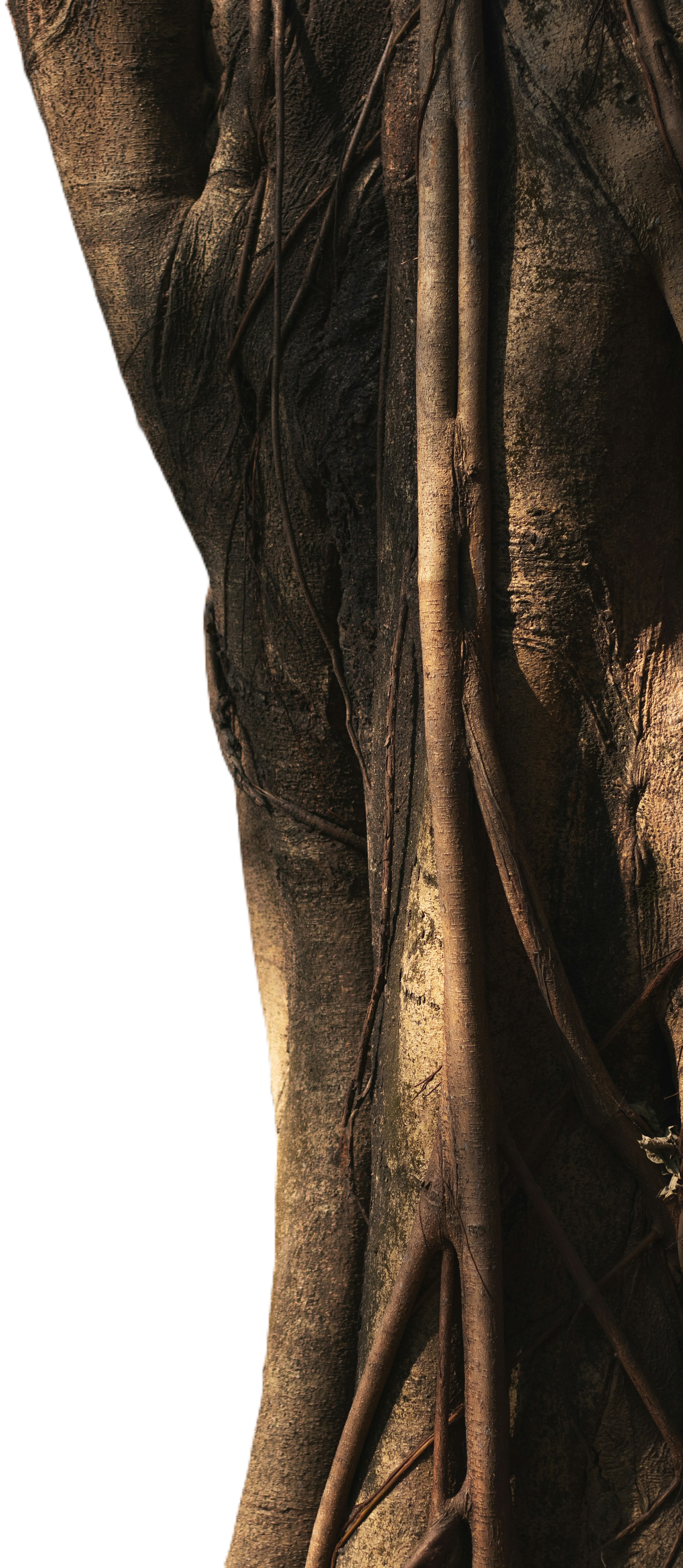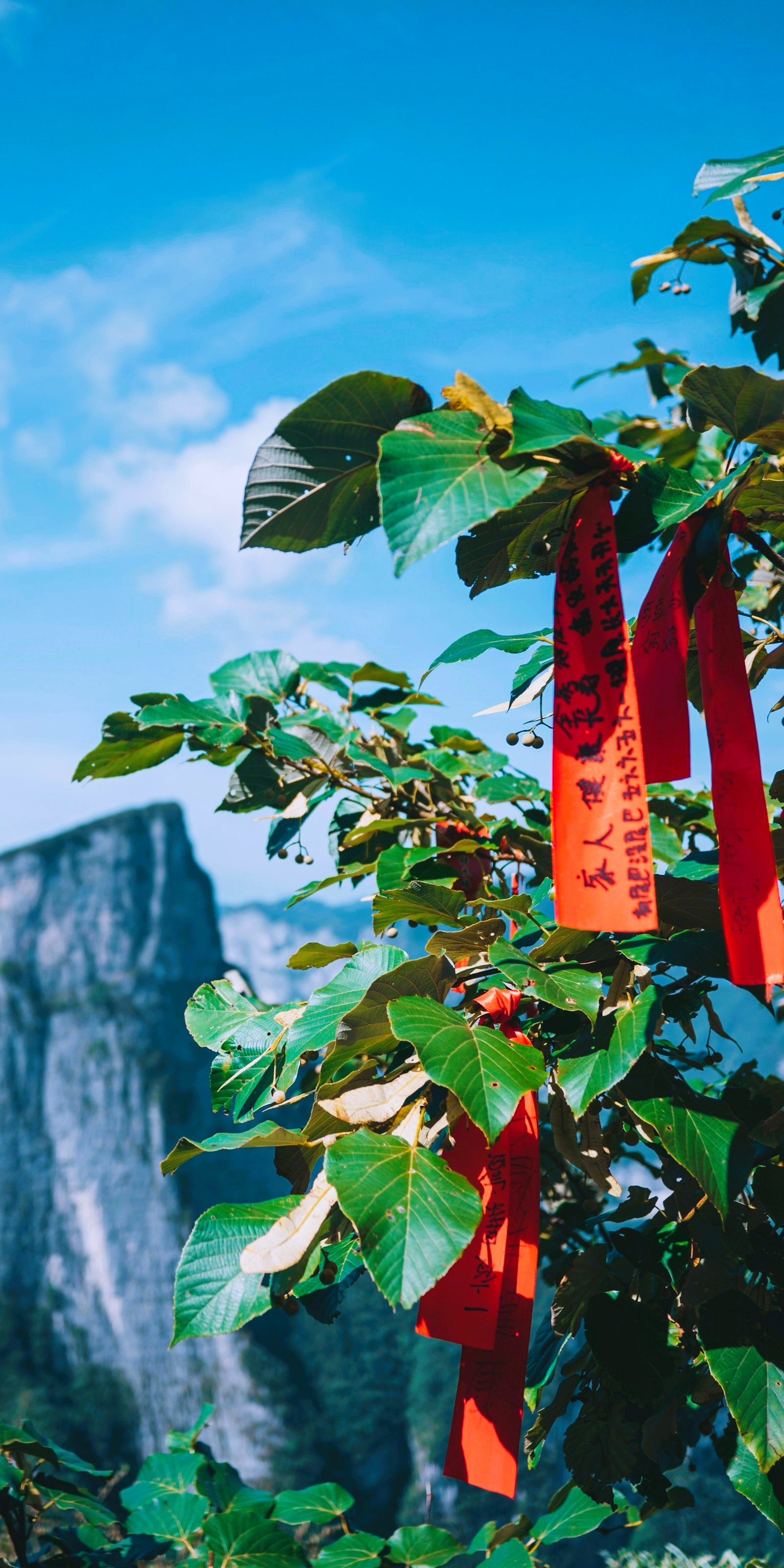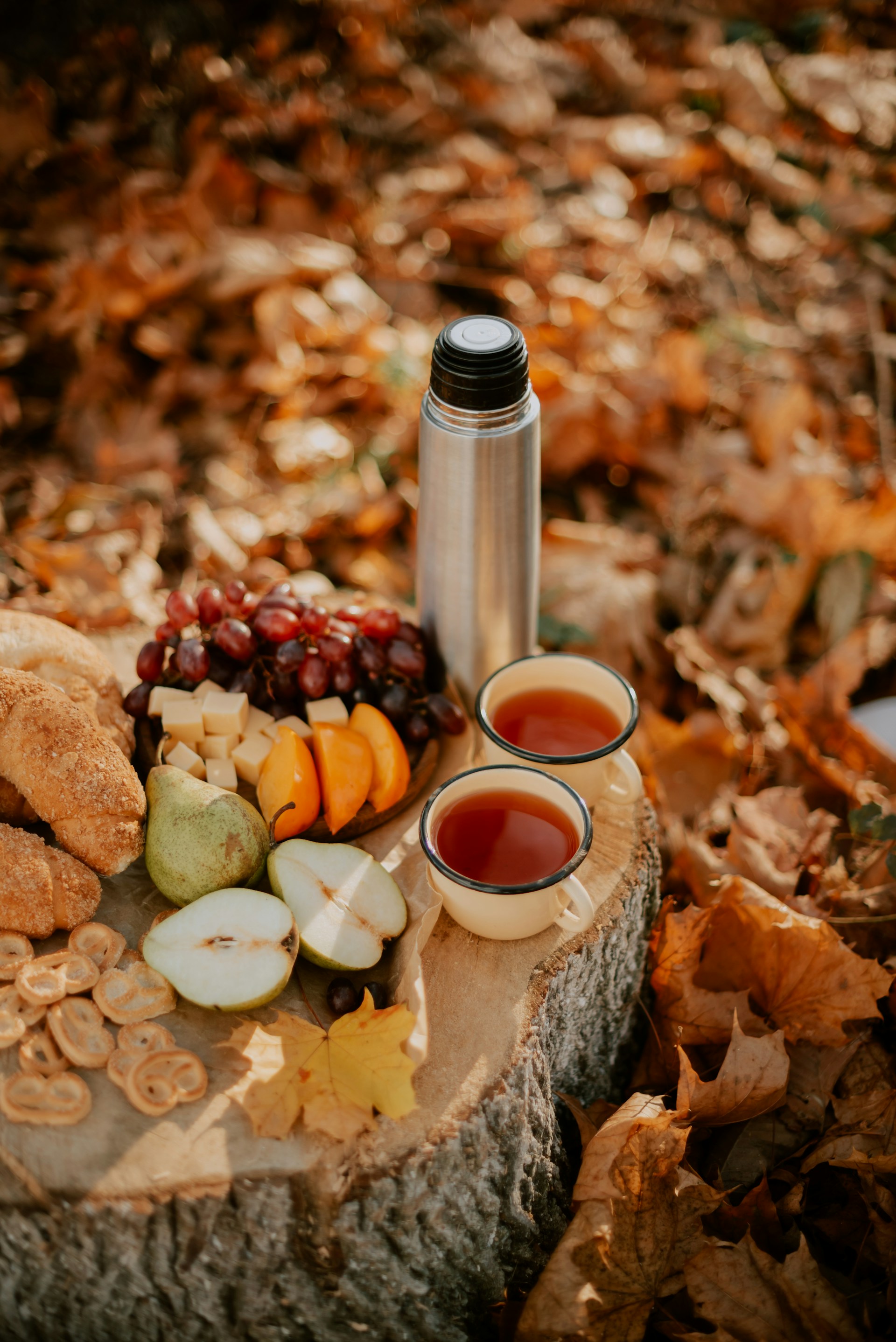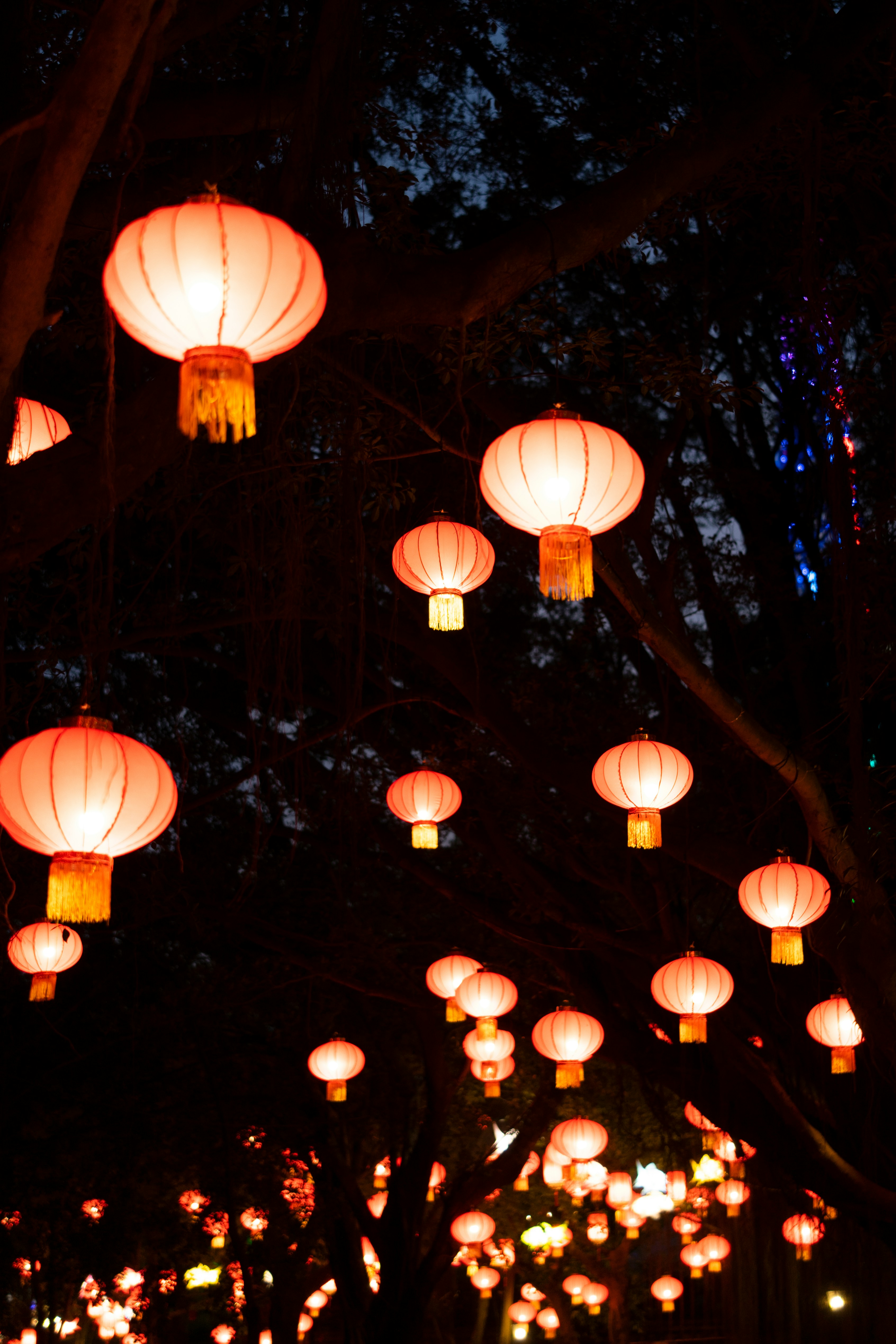Orchardist's Shrine: Great Uyam Tree
Eve places her hand on the odd tree's trunk and all at once, she feels it: The sweet smell of ripe fruit hanging thick in the air like perfume. The echo of laughter from someone Eve shouldn't know, yet does intimately, rings in her ears. A vision from above of two blobs, one a blur of purple and the other of green. Distantly, Eve hopes that they're fighting. When the sensory overload ends, Eve is left with a sense of calm so overwhelming, so at odds with her chaotic day, she surrenders easily. She knows that she should find Kabshi, but, oh, her legs wobble beneath her in protest - they weren't built for this hike. She lays down, back propped up by the old tree's mighty trunk, and falls asleep to the sound of lightly tinkling bells.Hidden amongst the vast orchards of the Aravun Yashelin civilization lies the oldest surviving Uyam Tree, thought to be as old as the Serayin Heyir themself. Its thick limbs are overburdened with fruit each year, so much so that its caretakers support its branches with posts lest they crack under the pressure. Most folks have tasted its fruit without ever knowing it. If the fruit is truly low quality stock like farmers claim, then why is it the secret ingredient in several brews and desserts reserved for special festivals and ceremonies? This ancient tree began life no different from any other Uyam Tree. Over time, however, the farmers turned its shade specifically into a beloved community gathering place. During a long, hard day of work in the fields, folks loved to gather for picnics and rest underneath its branches year after year. The Great Uyam Tree stood proudly, set apart from the rest by not only acquiring nutrients from the soil, but also by soaking up the excess spiritual energy of its Yashelin charges. While everyone suspected that the tree was special, maybe even conscious, the Great Uyam Tree was appreciated at face value for its rich fruit and plentiful shelter. After the Aravun Civil War, the Great Uyam Tree transformed into the Orchard Shrine. The tree miraculously survived with minimal damage despite the carnage around it. Farmers believe that its age and strength of spirit saved its life from the fires and subsequent outbreak of the Uyam Wastes. In response to the tree's survival and their own need for comfort, old celebrations around the tree took on a new weight and new traditions sprung up as well. It wasn't except in hindsight that everyone realized that the Great Uyam Tree had become not only a beloved gathering place, but sacred ground.

Hundreds of thousands of years earlier, Areta asks, "Did you seriously drag your office chair out to the orchard? For field work?!" "Yeah, why not?" Heyir replies, thoroughly distracted writing down their latest measurements and observations of the Great Uyam Tree's exceptional development. "You're supposed to be harvesting, not studying!" "Eh, nah, I'll pass," Heyir jokes. "After all, that's what you're here for, isn't it, sidekick?" Areta knocks them straight out of their chair, sending them flying over its roots into a pile of dirt... A declaration of war that Heyir responds to with glee.
Traditions and Celebrations
Honoring the Past
Expressing Gratitude: Offerings to the Tree
The farmers treat the Great Uyam Tree with extra care than the average tree in their orchard. In reverence to its old age, it is allowed to grow outward as far as it pleases, though its caretakers still prune most overly tall branches. The largest of the horizontal limbs are carefully propped up via wooden and metal posts. Each post has carefully crafted magical blessings written and sung into them by an anonymous Magi with the help of the farmers, each blessing intended to increase their strength. In addition, it is tradition for farmers resting underneath the tree to pour the last drops of their Uyam fruit juice or wine at the base of the tree as an expression of thanks. Folks are also cutthroat about littering and otherwise leaving any sort of mess around the tree.A Secret Memorial: Ribbons and Bells
Shortly after the war, farmers began to place multicolored ribbons and silver bells in its branches. Each ribbon and bell represents a Yashelin person lost during the Astris Genocide and/or the Aravun Civil War. The ribbon colors are meant to mimic the spiritual color belonging to the lost person. The tenor of the bells, meanwhile, are intended to replicate the tone of their voice. Until recently, no one outside of the farmers knew the meaning of the new decorations on the tree. Indeed, no individual or group planned it, but rather began as a manifestation of their need to do something with their grief and fury without catching the ire of the witch-hunting public.
by Chenyang1912
Future scene notes don't mind me - Scene of Eve waking up to lunching farmers, including the ever-elusive Kabshi. Kabshi, an orchardist, adopted the role of caretaker for the Great Uyam Tree after Heyir's exile. They had misgivings about Eve, especially her presence in the orchards, but they invite her to return the next day anyway because they respect Eve's appreciation of their work. It takes a while for Eve to realize that she's Kabshi's apprentice, owing to the slow nature of training in Yashelin culture.
Celebrating the Present
Rest and Play
One of the central tenets of the Hesha Flock as a whole is that they will never adhere to strict timekeeping. Any task given to them will take as long as it needs to according to the individual, not according to some outside force. Farmers are no exception to this rule, although they do have seasonal deadlines that they must meet. So, when I describe the Orchardist's Shrine as a community gathering place where farmers rest throughout the day, do not imagine a farmer taking a quick nap or scarfing down their lunches before returning to their duties. The early risers will start their work at the crack of dawn, while others join them throughout the day and into the evening. During the hottest hours of the day, everyone regardless of when they arrived descends upon the shrine with overburdened picnic baskets, filled with food and drink intended to share with their friends while they lie splayed across blankets. Others bring games of all sorts, such as card games and balls, to keep the momentum going even once all the food is packed away. Its not the easiest place to take a nap, but if you climb the tree, you'll find peace amongst the branches. When folks begin to return to their duties, it is tradition to for each of them to thank the tree for its service. This includes practical norms, such as cleaning up after oneself. It also includes a charming tendency to dump the last dregs of their drink - whether water, juice, or wine - onto the ground at the base of the tree because, according to at least one farmer, "it's only fair to share."Lantern-Lit Nights
Once every year, the Hesha Flock hosts a special 'Night of Lights' for all of its members, not just the farmers. Each member of the flock constructs two paper lanterns, a craft traditionally passed down from mentor to apprentice. One of the lanterns is made out of paper that closely matches the spiritual color of the maker. The second lantern, meanwhile, is always purple. The purple lantern represents their allegiance to the Hesha Flock. It also, consequently, represents their devotion to Heyir, their leader. At the outset of the Night of Lights, everyone hangs their lanterns either in the Great Uyam Tree's branches or along ropes tied between the posts. Instead of shade, the Great Uyam Tree instead offers a beacon of light to its charges in an otherwise pitch black night. Over the course of the night, the flockmates enjoy some of the finest food that Aravu has to offer and play many of its rowdiest games. This is also an excellent time for people from different walks of life within the flock who don't speak on a daily basis to touch base with one another, sharing not only their accomplishments, but debating ideas that sometimes transform into collaborative projects. Along with the addition of ribbons and bells to the tree, the Night of Lights is a newer tradition in the Hesha Flock's history, concocted by Kabshi, Eve, and a handful of allies. It didn't take long for the excitement around the event to spread, resulting in one of the most successfully attended casual events in Aravun Yashelin history... that most people still don't know about.Future scene note: I'd like a scene of Heyir's homecoming, since this celebration is a newer tradition. I think they would cry, profusely... or otherwise give every single one of them and the tree a hug. They're a little too proud for tears in front of their people, at least until the alcohol hits.
© 2023-2025 Aster Vela. All Rights Reserved. Unless otherwise credited, all images were created by AsterVela. Instances of Midjourney in this world are outdated and slowly being weeded out.
Global Background: Kyle Johnson
Global Cover: AsterVela
Powered by World Anvil
Global Background: Kyle Johnson
Global Cover: AsterVela
Powered by World Anvil
Cover image:
by
Joe Eitzen





Comments
Author's Notes
Image Sidebar Credit: Shakib Uzzaman, Unsplash